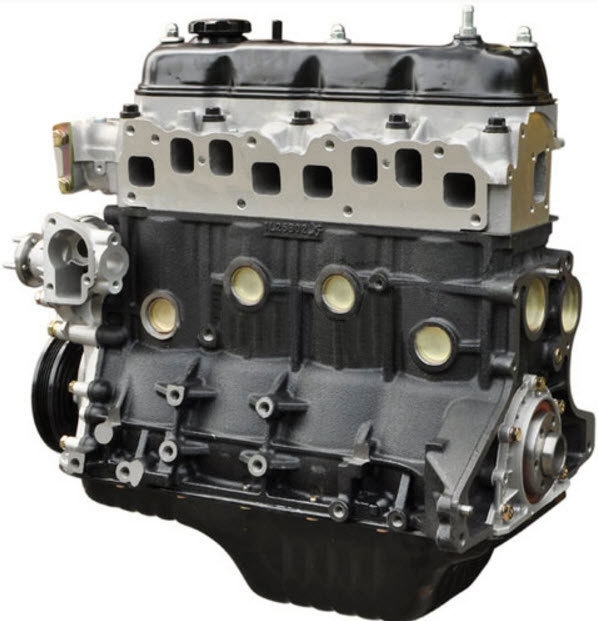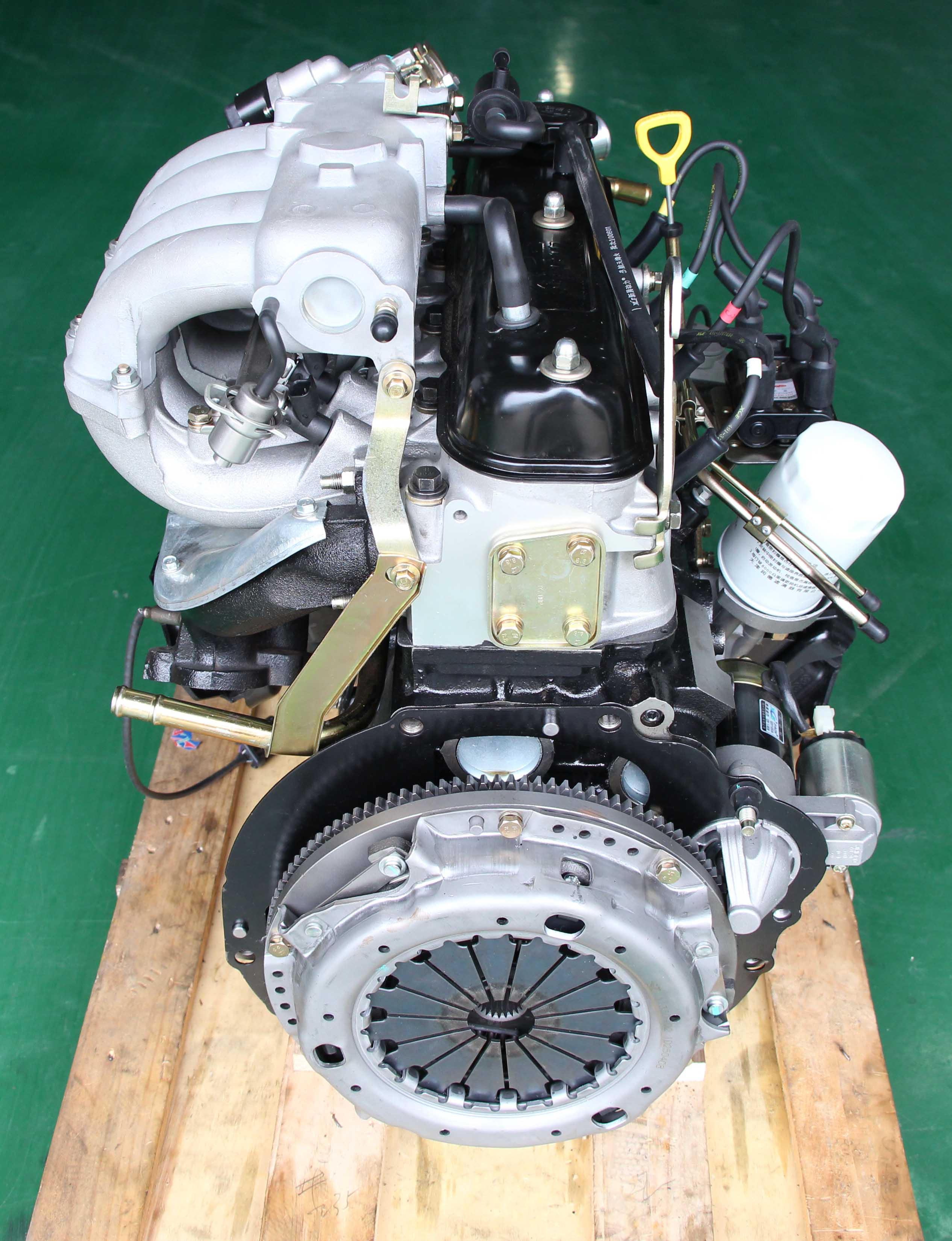A Complete Guide to Understanding the 4Y Engine’s Performance Capabilities
Why the Engine Is the very best Choice for Efficiency and Efficiency in Your Vehicle
The engine continues to be a pivotal component in vehicle layout, primarily due to its significant impact on both efficiency and efficiency. As improvements in innovation make it possible for smaller engines to provide amazing power while enhancing gas economic situation, the integration of features such as turbocharging and hybrid systems becomes increasingly important.
Comprehending Engine Types
Comprehending the different kinds of engines is important for enhancing performance and efficiency in automotive layout. The key engine kinds include internal combustion engines (ICE), electrical engines, and crossbreed systems, each offering unique advantages and limitations.
Inner burning engines, which can be additional categorized right into fuel and diesel variations, rely upon the combustion of gas to produce power. Gas engines generally offer higher RPMs and far better acceleration, while diesel engines are recognized for their torque and gas effectiveness, making them perfect for sturdy applications.
Electric engines, on the various other hand, utilize electric motors powered by batteries or gas cells. They provide instantaneous torque delivery, causing smooth acceleration and lower exhausts. The effectiveness of electric engines is dramatically greater than that of ICEs, making them a popular selection for eco-conscious consumers.
Hybrid systems incorporate both interior combustion and electrical engines, leveraging the strengths of both technologies. They enhance fuel intake by making use of electric power at reduced speeds and switching to fuel or diesel for higher rates or much heavier tons.
Choosing the appropriate engine type is essential for accomplishing desired performance metrics and environmental sustainability in modern vehicle engineering.
The Effect of Engine Dimension
Engine dimension frequently plays a critical function in figuring out an auto's performance and efficiency. Typically determined in liters or cubic centimeters, engine size directly influences the power outcome and torque attributes of a lorry.
Nonetheless, increased engine size frequently correlates with decreased fuel efficiency. Larger engines consume even more fuel, leading to higher emissions and operational costs. Consequently, manufacturers must balance the demand for power with the demand for gas economic situation. Smaller sized engines can supply ample efficiency for daily driving while promoting better performance, making them a preferred option in small and mid-size vehicles.
In addition, innovations in engine style, such as turbocharging and straight fuel shot, enable smaller engines to attain power levels equivalent to their larger equivalents. This pattern emphasizes the value of not entirely concentrating on engine size yet also thinking about overall automobile design and modern technology (4y engine). Eventually, the influence of engine size on efficiency and efficiency highlights the need for consumers to assess their certain driving needs and preferences when picking a vehicle
Advanced Engine Technologies
Developments in engine modern technologies have considerably improved the landscape of auto efficiency and efficiency, building upon the foundational ideas developed by engine dimension. Notably, advancements such as turbocharging and direct fuel shot have made it possible for smaller sized engines to deliver power levels previously connected with larger counterparts. Turbochargers press air getting in the engine, permitting increased power output without a corresponding increase in engine size, while direct injection optimizes fuel delivery, enhancing combustion efficiency.
Furthermore, variable valve timing systems have become an important innovation, enabling engines to change shutoff operation based on driving conditions. This adaptability improves both performance during acceleration and gas performance throughout travelling. Crossbreed and electric engine innovations further illustrate the shift in automotive style, integrating typical inner burning engines with electrical motors to take full advantage of effectiveness you could try this out while minimizing discharges.
Additionally, developments in materials scientific research have actually resulted in lighter, more durable engine parts, additionally improving performance and long life. The combination of advanced electronic devices and engine control systems also enables real-time modifications, guaranteeing optimum efficiency across numerous conditions. Jointly, these sophisticated engine technologies not just improve lorry performance yet likewise contribute to an extra sustainable auto future, demonstrating the ongoing development of engine design.
Harmonizing Power and Efficiency
Striking an equilibrium between power and performance is vital in modern auto design as suppliers seek to fulfill progressively stringent exhausts regulations while pleasing consumer demand for efficiency (4y engine). The difficulty exists in enhancing engine characteristics to supply robust power result without compromising fuel economic climate
To achieve this equilibrium, designers utilize various approaches, such as turbocharging, which enhances engine power forcibly in more air, enabling a smaller engine displacement that improves gas performance. Variable valve timing innovations likewise play a substantial role, enabling engines to change their efficiency attributes based on driving conditions, consequently boosting both power and performance.
Additionally, improvements in products and making strategies have actually resulted in lighter engine elements, which minimize general lorry weight and boost gas performance without endangering power. Crossbreed modern technologies have likewise emerged as a feasible option, incorporating standard inner burning engines with electrical powertrains to offer a boost in performance while preserving reduced exhausts.

Future Patterns in Engine Style

Moreover, the growth of advanced products, such as lightweight composites and high-strength alloys, is established to transform engine components. These products not just reduce weight however also boost thermal performance, thereby enhancing efficiency. In addition, makers are checking out variable compression proportions, permitting engines to adapt to various driving conditions, improving both power result and fuel economic situation.
Further, the increase of expert system and machine discovering in engine layout is anchor enabling predictive maintenance and real-time efficiency visit their website optimization. This modern technology can lead to engines that self-adjust for maximum effectiveness based upon driving patterns.

Final Thought
Finally, the engine works as an essential element in accomplishing optimum efficiency and performance in modern-day vehicles. Advanced technologies, such as turbocharging and hybrid systems, enhance power output while reducing fuel consumption and emissions. The interplay between engine size and design remains to evolve, driving innovations that balance exhilarating performance with ecological sustainability. As auto design proceeds, the emphasis on establishing effective, powerful engines will remain paramount fit the future of transport.
Furthermore, advancements in engine layout, such as turbocharging and straight fuel shot, enable smaller engines to attain power degrees comparable to their bigger equivalents.Innovations in engine modern technologies have actually considerably reshaped the landscape of auto efficiency and efficiency, structure upon the foundational concepts developed by engine size. Turbochargers compress air going into the engine, permitting for boosted power output without an equivalent increase in engine dimension, while direct shot optimizes gas delivery, boosting combustion performance.
Hybrid and electrical engine technologies additionally illustrate the change in automotive style, combining standard inner combustion engines with electrical motors to take full advantage of efficiency while minimizing exhausts.
Collectively, these innovative engine technologies not only boost vehicle performance yet also contribute to an extra lasting automobile future, showing the recurring evolution of engine style. (4y engine)